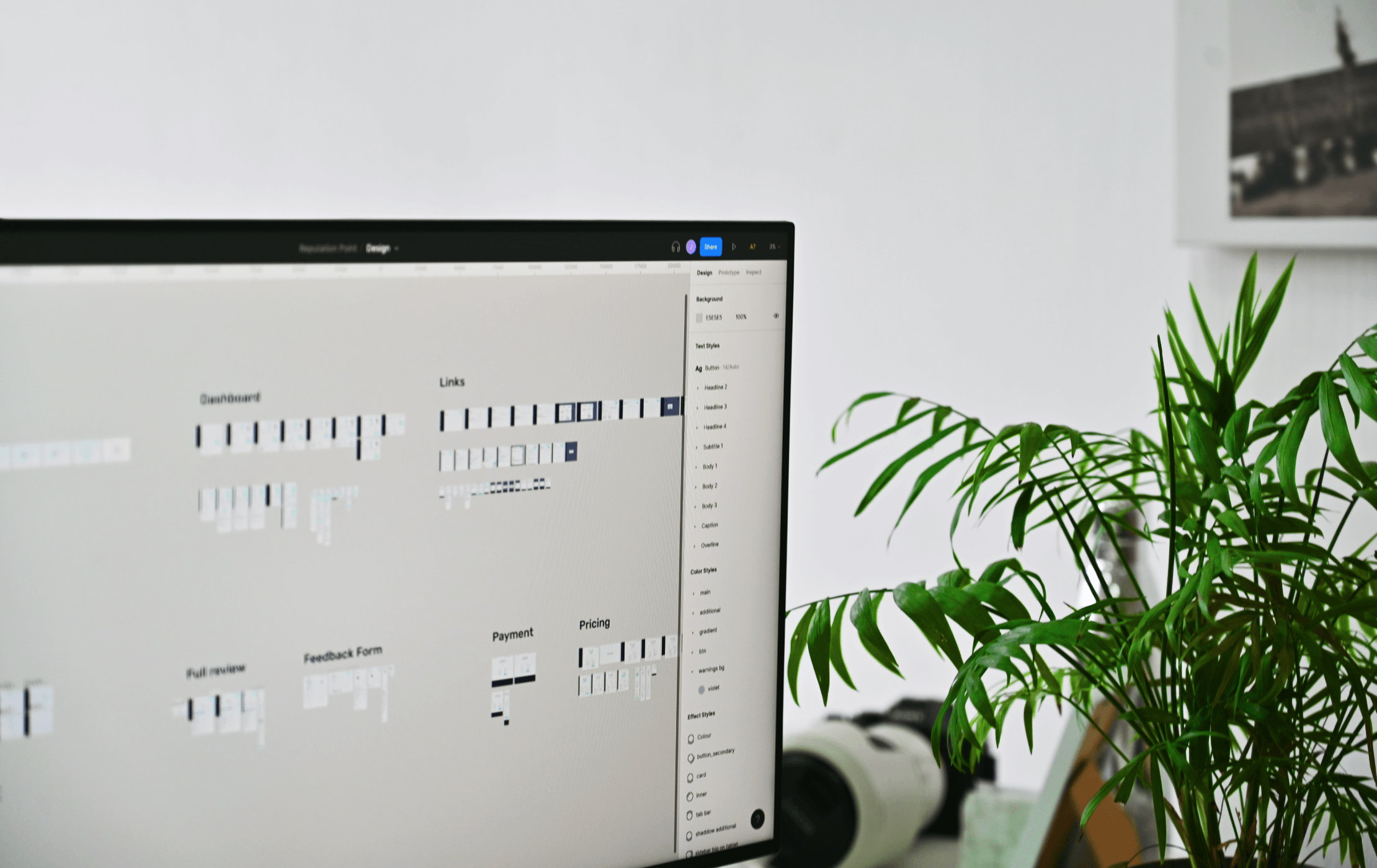
9 SECRETS OF EFFECTIVE COLLABORATION WITH A UI UX DESIGN SERVICE PROVIDER
This is how it can start.
The UI UX design service provider gets a request from the client that goes like this: “I’d like to create a service that helps users share their pics quickly and privately. You are free to use your creativity and imagination as you see fit.”
The process gets rolling. The team starts by holding a series of brainstorming meetings trying to set their creative thinking on the right track. They compile visuals, texts, and samples into mood boards; devise a map of user journeys; and reflect their design ideas on paper. The concept is ready — a spark of excitement lights up.
The team is set to show the design concept to the client, and they have it all ready — a collection of screen sketches, references for UI UX designs, and written statements. What would the client say?
“It’s outrageous! Why should one pay for those scribbles? There are no unique brand elements, artwork, or anything tangible at all. I want a refund!”
What went wrong in this case? Often, clients are driven by stereotypes that surround the creatives, and misunderstanding of the product design process. UI UX designers are not artists. What’s more revealing, designers don’t have to be good at drawing at all. If a designer shows the client handwritten paper sketches and reference images from the internet, this doesn’t mean that the final design will be just the same. Ideation is the early stage of the process, which is necessary to grasp the right direction and define the scope of work.
A good product is always the result of collaboration and engagement demonstrated by both parties — the UX UI design agency and the client.
WHY BOTHER AT ALL?
UI UX design flaws can cost you handsome money — say, as much as $500 million. Are you ready to part with that sum? Unlikely. Citibank was not ready either, but they had to.
As a large international wealth manager, Citibank caters to the needs of many corporate clients. One such client is Revlon, a cosmetics brand, that delegated the loan administration to Citibank. When making a transaction to the client’s creditors, the bank employees accidentally paid the full loan amount, $900 million, instead of the regular interest, $7.8 million. Although Citibank requested a refund from the lenders, they were able to get only a portion of that money back — $400 million. The remaining $500 million was as good as gone.
Isn’t the blame on employees? Yes, but to a certain degree. If the loan operation software they run was user-friendly, they could have avoided trouble. All they needed was context-specific instructions or hints that guide users through the interface. Even a pop-up confirmation request stating the total sum paid could have saved the day.
So what does a UI UX designer do? How on earth could they help?
Design is primarily centered around the product’s structure, or skeleton — and not the artwork. A UI UX designer constructs the experience users get when interacting with the product at every touchpoint — from signup all the way through to the intended action. To achieve this, designers work out as many use cases as possible. They then, reflect them in the product’s interface so that end-users interact with it intuitively and have no difficulty understanding what the result of each taken action would be. This is something that Citibank’s software lacked.
What’s the key takeaway from this? You have to stay relevant with the design process and be always there to guide the team through your business nuances and needs.
HOW TO EFFECTIVELY COLLABORATE WITH A UI UX DESIGN SERVICE PROVIDER?
There’s one important thing you should remember. Your digital product is created to be meaningful to your customers in the first place, but it is still part of your brand, your identity. For the product to communicate your custom message, you, as a business owner, should take part in designing it from day one. A designer perceives you as a source of knowledge necessary to make your digital product unique.
So be open to collaboration; it’s a win-win for all — you, your customer, and a designer.
TIP 1️⃣ BE CLEAR ABOUT YOUR PRODUCT VISION
A ‘set-and-forget’ approach doesn’t work in the UI UX design process. It is not similar to car service or the like where you go for expert maintenance. The design agency strives to deliver a product that is both functional and relevant to your business needs.
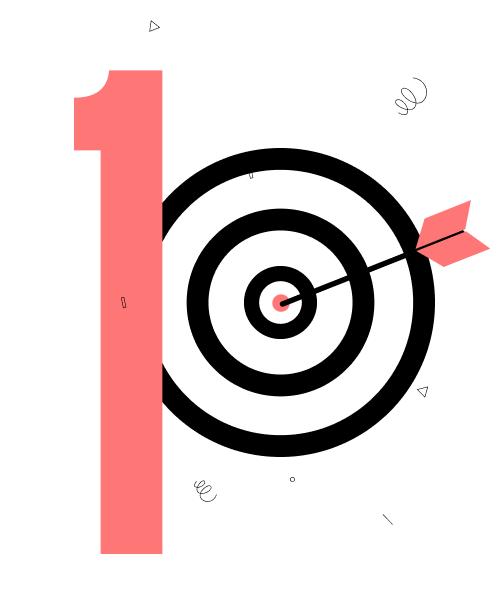
A product vision reflects your understanding of the product essence and where you want to end up in the long run. You are the one who understands this best of all. The goal is to direct the provider of UI UX design services to the same page so they could conceptualize the idea.
Sure thing, it’s essential to specify your visual and aesthetic preferences like colors, illustration style, or typography. But the product goals have a lot more to say. They clarify which resources are needed, which features are must-have, and why build this product at all.
TIP 2️⃣ ASK QUESTIONS
It’s natural that the UI UX designer and you come from totally different backgrounds. At one point, you will likely catch yourself thinking that you two are not speaking the same language. You do not understand the designer’s terminology and can’t grasp their view of your product design.
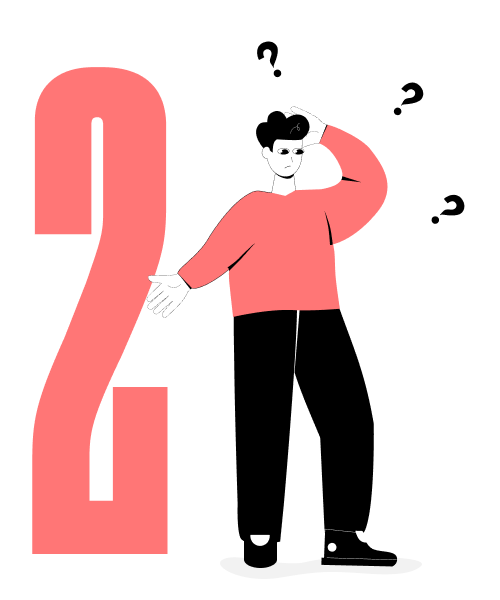
Don’t get frustrated though. You don’t have to know the UI UX design principles — more so, no one expects that from you. Just ask questions whenever they arise. After all, you will have to work together and thus, understand clearly how things should be done.
Designers enjoy discussions. This is a source of inspiration and guidance that they refer to when deciding on the best design concepts for your project.
Remember that the result of your fruitful communication is a better product and a happier customer.
TIP 3️⃣ PROVIDE REFERENCES
“A picture’s worth a thousand words.”
It really is true but only when you have a clear understanding of what you want to get in the end. If this is the case, why not show a reference to a designer. This may include any visual material you like — e.g. logos, websites, typography, icons, or even paintings of your favorite artists. You can create a mood board and share it with a UX UI design services company.
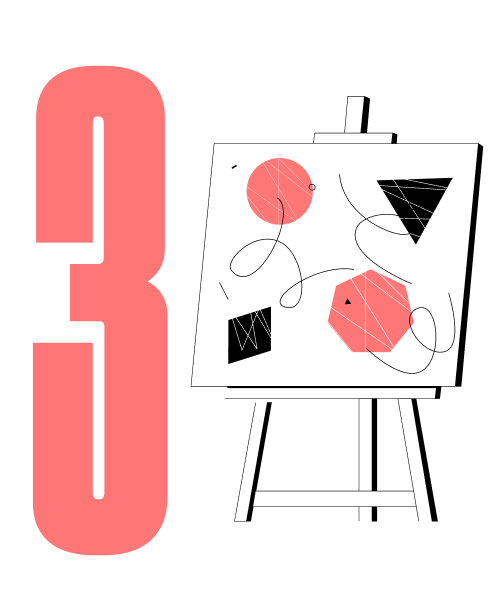
One would argue that it’s just a collection of random images. But it tells your story just as well. And often, this story is more meaningful than a wall of written text, because it provides a creative direction.
Visuals let the designer grasp the aesthetic nuances and incorporate them into your product’s design. That way, the team can better understand your vision and create a quality product faster.
However, it is not a must at all. There are other methods that can help the designer go the right route.
TIP 4️⃣ BE READY FOR A SMALL TALK
Your brand reflects you — i.e. your message, values, expertise. The more information the UI UX design service provider holds, the higher the chance that the product will be relevant to your unique business goals.
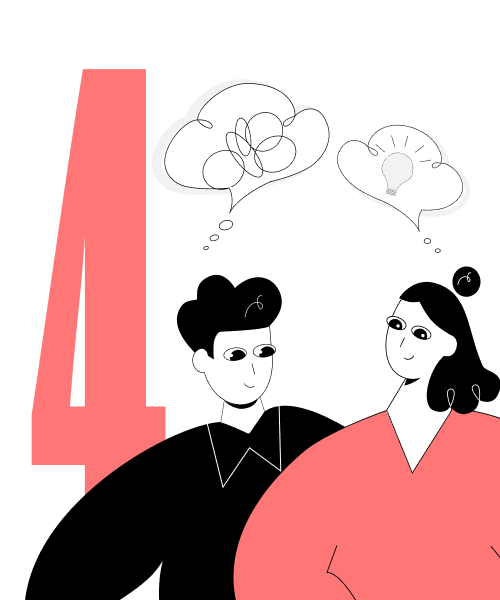
Simply put, if you come to the designer asking to add a specific interface element, be ready to explain why you need it. Most likely, the designer can offer you more options that will serve the purpose right.
Of course, it is a good thing to know precisely what your product should look and feel like. But in this case, you will treat the designer as a tool, and not a creator. Is this really what you expect from professional UX design services?
If not, communicate everything the team needs to know. Comprehensive answers make a design process more straightforward. So be ready for surveys and in-depth interviews.
TIP 5️⃣ DON’T SET LIMITS ON CREATIVITY
Often, customers fixate on their design idea and dismiss any alterations to it. They just hand over the requirements to the team for implementation and get into micromanagement of every small detail. Sure, it works, but is it viable? It would be way cheaper to master a couple of tools and create the design yourself.
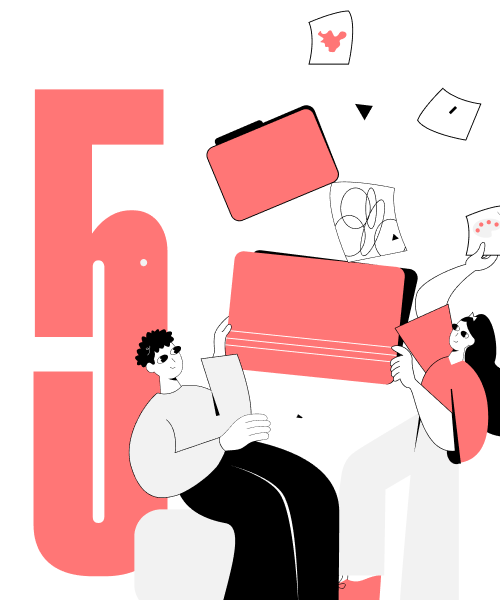
Why hire a UI UX design service provider then? — In order to land a seasoned expert with a fresh perspective on ordinary things, an engineering mindset, and a solid UX UI design portfolio under the belt. Tools are secondary here. You pay for creative thinking and authentic design solutions.
So let the designer make full use of their creativity — this will play into your hands. Be flexible and open-minded. Your idea may not be as sound as you think, because you are biased. Chances are the designer can spot something about your brand and product that you can’t. Just put some trust in them.
TIP 6️⃣ HAVE REALISTIC ESTIMATES OF TIME & BUDGET
UI UX design projects are multi-step. Generally, there are 5 steps — research & conceptualization, information architecture, visual design, interaction design, and usability testing. Each step can be calculated in terms of time and budget. Also, it is recommended to set specific targets for each step so you can evaluate the results and decide whether you’d like to continue cooperating with the design team or not.
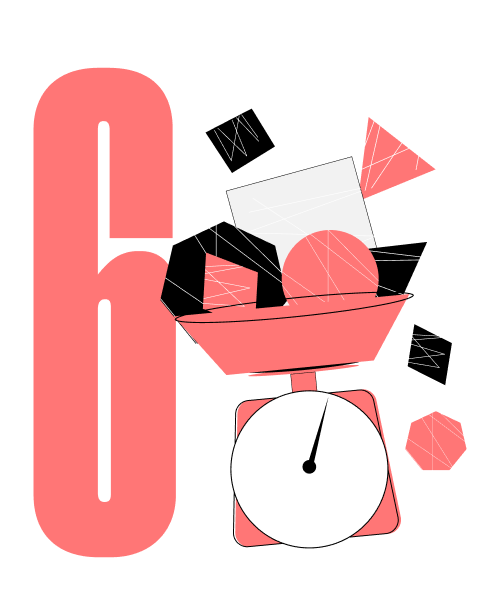
At CXDojo, we have both a basic package of services and custom offers. We can also help you estimate the project. We do not aim to drag out the process and charge top dollar for this. We are willing to understand each other and deliver quality UI UX services fast.
When estimating your project, we pay special attention to prioritizing. Say you have a limited budget. We can skip the user research step and immediately proceed with creating mockups that are further tested with real users. Obviously, a modified process comes with a certain risk. But the point here is we are trying to get into your shoes and decide how best to set about your project.
TIP 7️⃣ CRITICIZE CONSTRUCTIVELY
Some customers never approve the design concept at the first iteration. And this does not necessarily mean that the design is poor. They suppose that preparing an early version, the UI UX design service provider hasn’t tried hard.
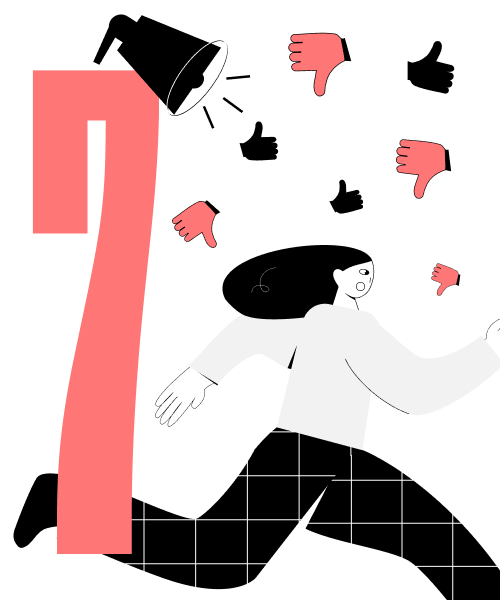
The truth is it’s the first version for you, and not for the designer. We bet they’ve prepared dozens of design concepts before choosing one and pitching it to you. So if you do like the first variant, just go with it.
Requesting revisions for the sake of revisions is a bad practice. It doesn’t make for a friendly atmosphere.
But there are also times when the designer doesn’t get it right on the first try. It’s normal to go through a couple of rounds of feedback. When articulating your criticism, however, try to be as specific as possible. Explain clearly what you don’t like and why. But don’t be prescriptive — let the designer find the way out on their own.
TIP 8️⃣ REMEMBER THAT YOU ARE ON THE SAME TEAM
Treat the UX UI design studio as your partner. It facilitates cooperation and indeed yields positive results. After all, the designer is not just a task performer; they are a problem solver. The designer is as interested in the success of your product as you are because it’s proof of their quality work.
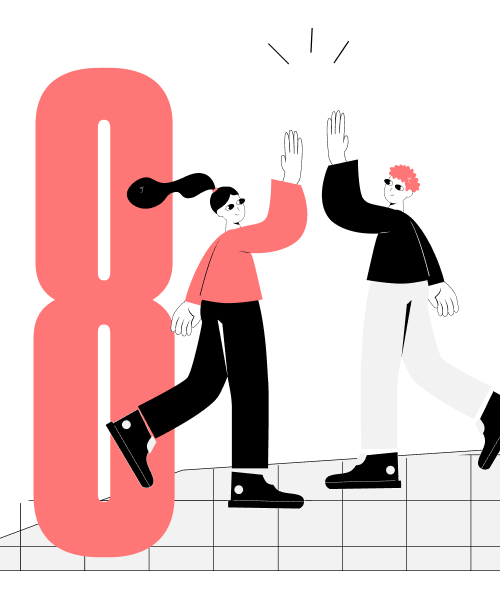
For smooth sailing, ensure that the design team is aware of your business values, aspirations, and risks. This nurtures a unique vibe of collaboration. Hold meetings to discuss progress and validate the milestones once they are achieved.
Although parties may have varying levels of engagement and availability, it is still important to maintain regular communication as it helps to timely adjust your creative direction.
TIP 9️⃣ DON’T EXPECT PERFECT RESULTS IMMEDIATELY
There will be no polished design right away. Be prepared for this.
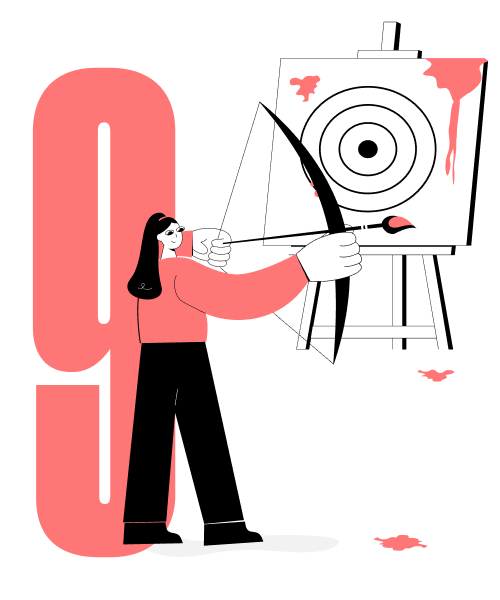
It’s better to launch a rough product in order to test the hypothesis. This gives the designer a chance to spot flaws early on and quickly pivot if necessary. It’s the beauty of the agile design process that is performed gradually, iteration by iteration.
The core of UX design is research. No matter how deep it is, the results still need to be checked with real users. It is easier to do when the project is still on a small scale. So don’t immediately require a perfect product neither from a designer nor from a developer. A perfect product is one that is updated and improved continuously.
There’s one good saying: “Less is more.” A product with minimum features can still be used and bring meaningful insights. If you aim for sophistication instead, you will likely waste much time, budget, and energy on both your side and the side of a design agency. You might be surprised, but the designers do not see any benefit in it. The energy that designers seek in cooperation with the customer lies in the satisfaction they get from the work done. It’s not about money, it’s about inspiration.
We are eager to get inspired by your product idea and make it real.
Let’s discuss it!
Author
back to all postsOUR RECENT PROJECTS
 Custom Logo Design For An Android App Emulator
Custom Logo Design For An Android App Emulator
- gaming app emulator
- logo concept & design
- brand identity
- brand book
 INCREASE APP ENGAGEMENT
INCREASE APP ENGAGEMENT
- performance tracking app
- mobile-first development
- data entry automation
- software integration





